
Samuel Pepys was born in London on February 23, 1633. Though he was an important government official, Pepys is primarily known for the detailed diary that he maintained for 10 years. Much of what we know today about day-to-day life in 17th century London comes from his diary. In it, Pepys describes with great detail and compassion the Great Fire of London, the plague that beset Europe, and the coronation of Charles II.
One of the most interesting aspects of Pepys' diary is that we can read about the details of this person's life and then make assumptions about life in general for the people of that time period.
Ask students to write diary entries that recap everything they did the day before. They should write about what they ate, the clothes they wore, activities they did, and so on, making their diary entries as detailed and descriptive as possible. Then, have each student switch diary entries with another student, who will read the entry as if he or she were living a hundred years from now. Direct students to underline words and phrases that describe what life must have been like for teenagers in the year 2013.
As a class, brainstorm a list of defining characteristics of life in the early 21st century, and ask students to write paragraphs that summarize these details.
Older students can read a section of Pepys' diary and write paragraphs to summarize life in the 17th century.
This site contains a biography of Pepys, numerous pictures of him, and excerpts from his diary.
This site from National Public Radio offers a series of "radio diaries," in which people of various backgrounds document events of their lives. Students can listen to several of the broadcasts and access information about how to create their own radio diaries.
This site contains hundreds of excellent resources associated with Anne Frank, one of the most famous and widely taught diarists.

Like many holidays, Valentine's Day arose from a confluence of Christian and pagan themes. Originally it was the occasion of a pagan Roman rite called the Lupercalia, on which young men and women were matched by drawing lots. In the fifth century, the Church changed the emphasis of the festival by making it the commemoration of a Christian priest named Valentine, martyred on this day in 289. Nevertheless, the day's association with romantic love persisted.
This would be a great day for students to practice their skills in using poetic devices. Have students find examples of each type of figurative language below, and then write an original example using each device, each time employing the word love:
- Simile: Love is like an ocean rolling over me.
- Metaphor: Love is a tree with many branches.
- Personification: Love whispers in your ear.
- Rhyme: Love sure can stink/Anyone in it might be a fink.
- Alliteration: Love lightly leaps.
When they have finished, students can illustrate their examples, share them with the class, and post them around the room.
This ReadWriteThink interactive tool allows students to create poems about selected themes. For Valentine's Day, they can select a heart from the Celebrations theme.
This page includes definitions of several types of figurative language, including idioms, onomatopoeia, and alliteration.
This resource, from the Library of Congress, explores possible origins of Valentine's Day traditions. Related Library of Congress resources, such as music and photographs, are included.
This interactive resource focuses on idioms and accompanies the ReadWriteThink lesson plan Figurative Language: Teaching Idioms.
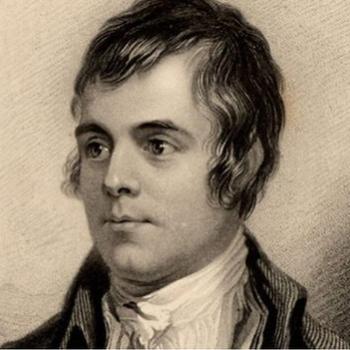
Considered Scotland's national bard, Robert Burns was born to poor tenant farmers in 1759. The author of "Auld Lang Syne," Burns became famous after he published his first volume of poetry, written in the Ayrshire dialect of Lowland Scots. When he died at age 37, 10,000 people turned out for the funeral of their beloved "Rabbie" Burns. Every year on this day, many Scots celebrate his honor with a ritual dinner of haggis and scotch whisky.
In addition to being a poet, Robert Burns collected traditional Scottish ballads. To celebrate his birthday, introduce students to the ballad form. Share elements of the ballad with students. Ballads are a part of oral tradition. They celebrate a desirable attribute, tell a story, or herald a significant event, and they often contain a refrain. The metrical and rhyming structure of ballads can take many forms. Here is one type of ballad stanza, which follows a strict formula:
The second and fourth lines of each stanza rhyme.
Line one has 8 beats
Line two has 6 beats
Line three has 8 beats
Read some examples of traditional Scottish ballads to familiarize yourself with their basic characteristics.
Next, have students brainstorm two lists: one should include qualities they admire in people they know, and the other should contain significant events that have happened recently. Have students choose one item from either list as a subject for a ballad. A good way to start is for students to try writing the refrain first and then try writing a stanza, adhering to the formula above. You may want to have students read-or perform-their ballads aloud.
Getting ready for your own Burns Night celebration? This BBC website includes biographical background material, poetry text, and audio (useful to demonstrate accurate pronunciation of Scots). Even more importantly, the site includes step-by-step details on hosting a traditional Robert Burns supper, including links to recipes for haggis, the traditional Scottish dish made from sheep stomachs, lamb livers, and oatmeal.
This website offers information about the National Trust for Scotland site established at Burns' Scottish birthplace.
This Poets.org webpage offers a biography of Burns and links to a selection of his poetry.
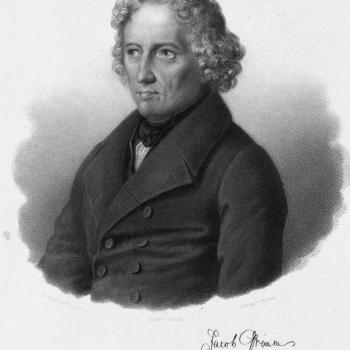
Jacob Grimm was born in Hanau, Germany, on January 4, 1785. With his brother Wilhelm, he began collecting traditional German folk tales, publishing their first volume, Children and Household Tales, in 1812. While many of these stories are still well known today-"Cinderella" and "Little Red Riding Hood" among them-their long-critiqued violence and frankness have been toned down over the years in more familiar versions. After a long career as an academic and librarian, Jacob died in 1863.
Students are always fascinated to learn that the fairy tales associated with the Brothers Grimm to which they have been exposed most of their lives are not, in fact, the original Grimm versions; they have most likely only read or seen softened or "Disney-fied" versions. This activity has students encounter the original versions, so it may not be appropriate for younger students.
Have a student tell the story of Cinderella, starting from after the Ball. Then, have students read the end of the original version of the story and use the ReadWriteThink Venn Diagram interactive to compare and contrast this version with the more familiar retelling they heard from their classmate. Encourage students to discuss why certain changes might have been made and what the effects of those changes are on readers.
Next, print out a copy of a lesser-known Grimm story (see Web Links below) for students to read. Ask students to rewrite this story for an audience of elementary school children. Students should be able to explain what changes they made and the intended effects of those changes. Alternatively, students can use the Fractured Fairy Tales interactive to write alternative versions of fairy tales.
This National Geographic site invites students to read and hear stories in their original, unsoftened forms. Students can choose from a menu of options to guide them through the tales.
This Ohio University website includes audio versions of three Grimm tales.
This site explores how tales have changed over time. The collection includes texts and images from a dozen English versions of the Cinderella story, with similar collections on "Little Red Riding Hood" and "Jack and the Beanstalk" as well.
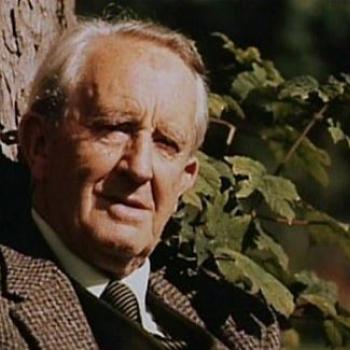
J.R.R. Tolkien, Oxford don and professor of linguistics and medieval literature, was born in South Africa on this day in 1892. He is best known for his creation of the elaborate mythological world of Middle Earth. A tale told originally for his children's amusement, The Hobbit was published in 1937 to great acclaim. His more substantial work for adults, The Lord of the Rings, became a literary watershed with an inestimable impact on popular culture. Tolkien died in 1973.
With the film versions of The Lord of the Rings and The Hobbit having become so popular in recent years, there is a good opportunity to compare the differences between print and nonprint media. Start with a brainstorming session on how movies tell their stories. Students may need prompting, but eventually they will generate a list that will likely include music, characters, costumes, settings, and acting. Then, ask students to think about how books or novels tell their stories; some things on this list will overlap with the first.
Next, have students read an excerpt from a Tolkien novel. One that works well is the scene from the first chapter of The Fellowship of the Ring in which Gandalf convinces Bilbo to leave the ring behind. Then, view the corresponding scene in the film version. This scene can be found at roughly 0:25.00 on the time counter. After viewing, have students write about changes the filmmakers made and, most important, why they made these changes.
As a final step, have students return to any text that they are currently reading in class and imagine how a particular scene might be filmed. Ask students questions such as the following: What music would be used? What actors would play the roles? What costumes would they wear?
The goal of this site is "to encourage and further interest in the life and works" of Tolkien by providing information about "the books he wrote, his life, and books others have written about him." It is a must-stop for Tolkien fans.
Explore pictures of real-life locations in Scotland, paired with descriptions that Tolkien used to describe his Middle Earth, at this National Virtual Museum site from the United Kingdom.
The History of Literature Podcast takes a fresh look at some of the most compelling examples of creative genius the world has ever known. This episode covers J.R.R. Tolkien.
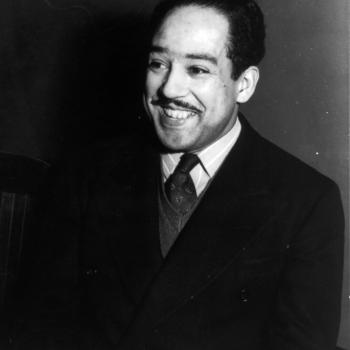
Langston Hughes was one of the chief voices of the Harlem Renaissance and a noted poet and author. Hughes' poems gave voice to an entire generation of African Americans and their experiences, feelings, thoughts, and dreams.
Provide students with a copy of Hughes' poem "Dreams." Each stanza of the poem is one sentence, and each sentence contains a metaphor for a dream. Tell students that a metaphor compares two objects or ideas that are not generally associated with one another. Have them identify the metaphor in each sentence, and then ask them to think about what Hughes was trying to convey about dreams by using these metaphors. What kind of dream would a "broken-winged bird" represent? How about a "field frozen in snow"?
Brainstorm with the class some other metaphors for dreams that Hughes might have considered for his poem. Conversely, have the class brainstorm metaphors for dreams that people may have that they hope will come true. Working in groups, students can then compose poems using metaphors for dreams coming to fruition.
From the Modern American Poetry website, this collection of materials includes biographical information and literary criticism on the poet's works.
Part of The Library of Congress website, this section features photos and biographical information about Hughes and his work.
This webpage from the Academy of American Poets provides information about the life of Hughes and offers a collection of 13 of his poems. Links to other poet pages are also provided.
This site offers a biography of Hughes and some examples of criticism of his work, along with links to many of his poems and articles both by and about him. There are also some audio recordings of his work.
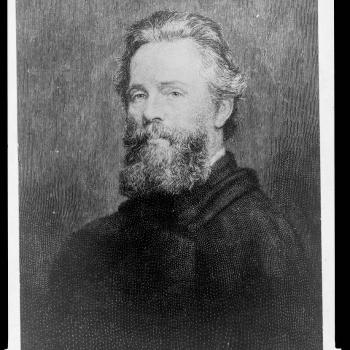
In 1897, Adolph S. Ochs, the owner of The New York Times, created the famous slogan "All the News That's Fit to Print," which still appears on the masthead of the newspaper today. He wrote the slogan as a declaration of the newspaper's intention to report the news impartially.
Make a list of the newspapers your students see their parents read. Discuss how different newspapers offer different points of view that appeal to different audiences.
Choose a current event, and have each student read a different editorial on the topic. The Internet Public Library has online newspapers from around the world and throughout the United States. After everybody has had a chance to read their editorials, have students share them with the class. Students should be able to identify the editor's point of view in each one.
Ask students whether they think the newspapers they examined were impartial, and what, if any challenges exist in reporting the news impartially.
Students can use this interactive tool to create original newspapers. Students select from different layouts, add text and headlines, and then print to add their own images.
This resource provides kid-friendly news articles and other resources that can be used with or without the printed magazine.
The New York Times website offers access to current news and other newspaper features. The Learning Network offers lesson plans and other teaching resources. For full access to the site, free registration is required.
The American Society of Newspaper Editors offers journalism tips for students, teachers, and editors at this site. Included are lesson plans, links to student resources, and interviews with professional writers.
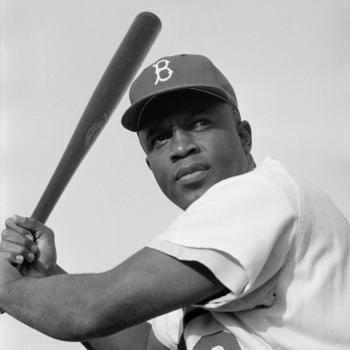
Jackie Robinson, the first African American to play Major League Baseball, was born on this date in 1919. Robinson joined the Brooklyn Dodgers in 1947 and played for the team for nine years. He was voted the National League's Most Valuable Player in 1949, and he was inducted into the Baseball Hall of Fame in 1962. Robinson died October 24, 1972.
In addition to his role as an athlete, Robinson fought publicly to end racial discrimination for others. The U.S. National Archive collection Beyond the Playing Field-Jackie Robinson, Civil Rights Advocate includes messages Robinson sent to the White House from 1957 to 1972. After reading these messages, have students discuss Robinson's attributes as both an athlete and a civil rights activist. They can use the interactive Bio-Cube to organize the information about Robinson. More tips are available for use with the Bio-Cube.
Once your students have a sense of who Robinson was, expand your discussion to the more general issue of the role of athletes in society. Brainstorm a list of attributes important to being a good athlete in any sport at any level of play. Then, in groups, have students select one of the attributes and write about how that character trait would be useful in other areas of life. For instance, a high degree of dedication certainly translates outside of the sports arena. In what other walks of life might dedication be an essential characteristic?
This Library of Congress site presents information about the life and career of Jackie Robinson as well as highlights from a century of baseball.
This Baseball Hall of Fame Web page offers statistics about Robinson's career and his other contributions to baseball.
Jackie Robinson and many other extraordinary athletes had been playing in the Negro Baseball League for years before Robinson broke the "color barrier" in the Major Leagues. This site offers information about the history of the Negro Leagues, as well as information about the museum itself.
Read about the life of Jackie Robinson in this interview with his wife, Rachel Robinson, from Scholastic. Robinson answered questions from students during a 1998 live interview.

In 1986, the Space Shuttle Challenger exploded, 74 seconds after launching from the Kennedy Space Center in Florida. All seven astronauts on board were killed, including teacher Christa MacAuliffe, who was to have been the first U.S. civilian in space. Hundreds of millions of people around the world watched the explosion on television.
Students will not have first-hand memories of the explosion, so interviewing an adult about the events of that day is one way for students to obtain information while learning more about how to conduct an interview.
In groups or individually, have students interview a parent or another adult on the subject; then, have them share the information they gather. In particular, ask students to consider whether everyone interviewed had the same memories and recollections. Encourage them to hypothesize about possible reasons for the differences.
Alternatively, ask middle or high school students to write about their own recollections of the Columbia disaster from February 2003. Have students compare accounts of the events, again noting differences and possible reasons for those differences. Have students research another historic event from multiple perspectives.
The New York Times Learning Network provides this article about the Challenger disaster that appeared in the Times on the day of the explosion.
This official NASA website offers archives of the 135 space shuttle missions and the ongoing missions of the international space station. Details on space shuttle missions include original launch details, the history of human space flight, and the construction of the shuttle.
This Kennedy Space Center website provides historical information related to the space shuttle program, including mission facts and a reference manual.
In August 2007, Barbara Morgan, who trained with Christa MacAuliffe as back-up candidate for NASA's Teacher in Space program, finally travelled in space as part of the mission STS-118 crew. Read about the mission and Morgan's experience at this NASA page.
NASA and the Challenger Center for Space Science Education shares a video of astronaut-educator Ricky Arnold performing one of McAuliffe’s experiments aboard the International Space Station.
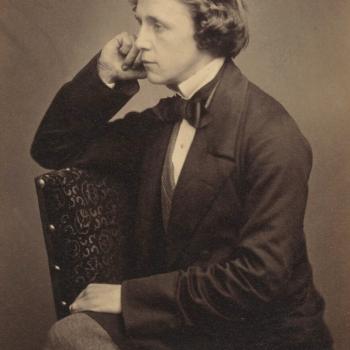
Lewis Carroll is the pen name of Charles Lutwidge Dodgson, who was a lecturer in mathematics at the University of Oxford. He is best known as the author of Alice's Adventures in Wonderland, which he wrote to entertain Alice Liddell, the daughter of a friend. Carroll wrote other children's books, nonsense poems (including "Jabberwocky"), and a book on mathematics. He died on January 14, 1898.
After reading Chapter 6 of Through the Looking Glass, plan a "Very Merry Unbirthday Party." Begin by having students search the text for the important elements of an unbirthday party, and then have them use the interactive ReadWriteThink Venn Diagram to compare unbirthday and birthday parties.
Once students have listed the characteristics of an unbirthday party, you're ready to begin the planning! Decide on the date, time, and number of guests for the party, as well as the activities and food that you'll include. Have each student create an invitation signed by a character from the book. Before writing their invitations, have students use the interactive ReadWriteThink Character Map to focus on the key elements of the characters they choose. They can also construct riddles based on their characters for the party guests to solve.
On the day of the party, students may come dressed up as their characters, or they can wear masks. Once everyone has finished eating, allow each child to share his or her character riddle, and then read some unbirthday stories.
Play chess against the Queen of Hearts, try your hand at the online maze, and explore the many other online activities and games at this interactive website.
This website features resources related to Carroll's mathematical studies, as well as biographical material, photographs, and popular culture materials that link to Alice.
This Library of Congress resource offers links to images of a scrapbook kept by Lewis Carroll, a gallery of portraits taken by Carroll, and a timeline of events during his life.
Read nine poems by Lewis Carroll, courtesy of Representative Poetry On-line from the University of Toronto. The poems include such favorites as "The Hunting of the Snark," "Jabberwocky," and "The Walrus and the Carpenter."